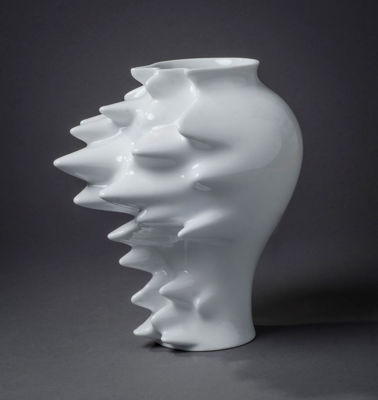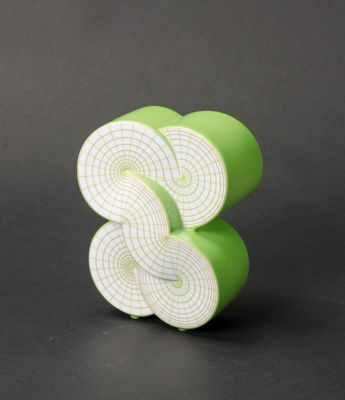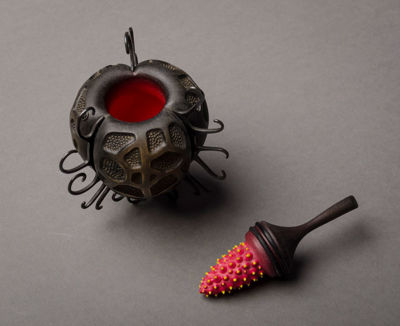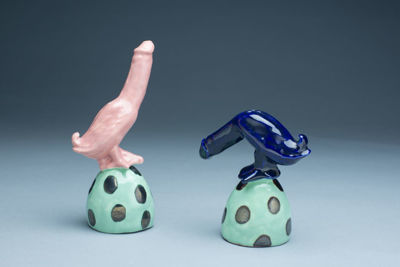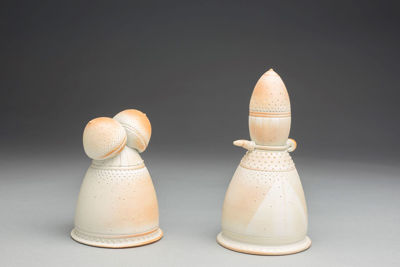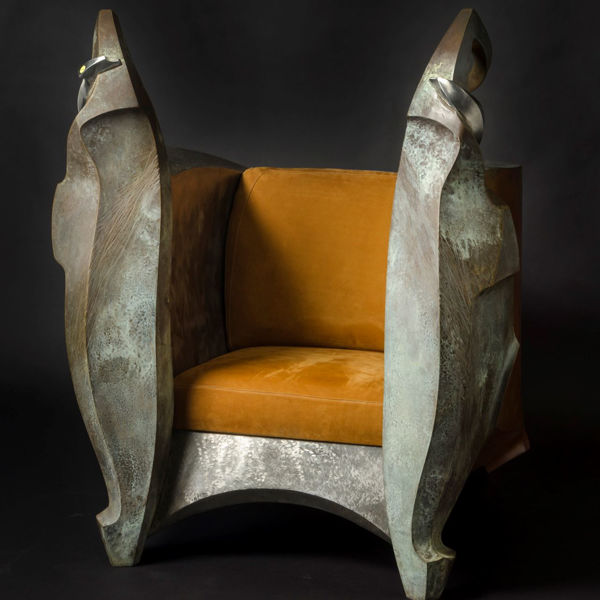Decorative and Design
Title: Reticulated Vase
Teco, or the Terra Cotta Tile & Ceramic Company, founded by William Day Gates in 1881, were the first major manufacturer of architecturally-focused terra cotta — their practical lines of tile, brick, chimney and urn gradually complemented by a burgeoning set of art pottery that carries similar ideals and methodology. Overall form is presented in a simple, reduced palette of shape, the large bulk designed by Gates or the school of Prairie School Chicago architects following in the wake of Louis Sullivan — including William James Dodd and the eminent Frank Lloyd Wright. The pieces aimed to convey a decorative purpose through the merging and flattening of geometric and organic structures in a naturalistic fashion, and the industrial process of their construction meant an increased affordability. The micro-crystalline green glaze has a wispy, crisp silvered tonality, its unique characteristic developed by Gates over 13 years, and is generally applied on shades of black overglaze to add understated depth.
Title: Roman Dog
Romule finds a positive figural form in the chiaroscuro-like glaze of this cup, pulling the image of the dog — clearly descended from the Capitoline Wolf in title and countenance — from the shadows, and extending it out into substance with a nobly moulded ceramic head. The artist frequently explores subtle erotic narrative in her pottery, and the enhanced breasts and maternal context of the wolf in Romulus & Remus’ myth suggests a complex fascination.
Title: Rosenthal Studio-Line Fast Vase
The designer Cédric Ragot was inspired by the shape of the Chinese Ming-Dynasty vases when he designed the Rosenthal Studio Line Fast Vases. But the products of the Rosenthal Studio Line Fast Vases series seem to having been frozen in a kind of digital time lapse. With this abstract picture of the cultural changes of the last 500 years another outstanding design object of the Rosenthal Studio Line Fast Vases had been created, which already was awarded with the renomated Gold Design award of the Chicago Athenaeum.
Title: Rosenthal Studio-Line Sculpture
Free standing inter-knotted shape of glazed white porcelain, A1 Model 11011 and Decor 5113, painted in black stripes on the front and back in enamel, and with the sides left white Sapone’s work explores the formal ideals of graphic design and constructive art, exploring the principles under which visual elements are arranged and appeal to the eye. Through a use of concentric circles and segmented line “Rosenthal Studio” forms a knot-like system of movement and overlapping order, the eight major circular diameters converging within a square boundary — each revealing its proportions through precise use of enamel paint. A vivid wall of colour along the pieces’ depth gives graphical pep and extends the sense of a closed and complete circuit — Capone carefully utilising a pared down and intuitive selection of colour from his ‘rational system of order and sensation’.
Title: Rosewood and Wenge Desk
Rosewood and wenge desk with angular wooden top with beaded edge and two swiveling drawers over a pedestal base.
Title: Rumex
Louise Hibbert is a Welsh artist known for her nature-inspired boxes and sculpture. She is particularly inspired by microscopic creatures, marine life, beetles, and seeds--particularly the weird and wonderful. She aims to make alien worlds more accessible. When looking for inspiration she pays special attention to texture and color. Her pieces are designed to be interacted with, not just admired from afar. “Rumex” was made in collaboration with another artist--Sarah Parker Eaton22. It is based on a seed pod from the genus Rumex that encompasses over 200 species of annual, biennial, and perennial herbs in the buckwheat family Polygonaceae. Seed pods from this genus are three-sided achene, often with round tubercle on one or all three of the sides





